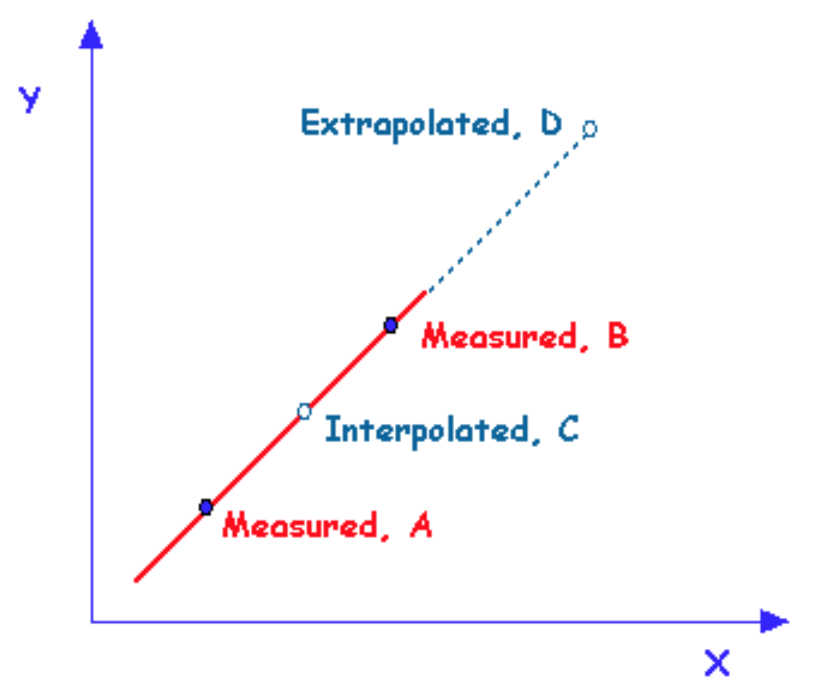LESSON: Extrapolation & Predicted Values
Extrapolation & Interpolation
When we use a regression line (linear or nonlinear) to make a prediction about are data set, there are two types of predictions that can be made:
Extrapolation
Extrapolated predictions are those that are made outside of the known data points. Trends in the known data can often be used to make accurate extrapolated predictions; however, this is not always the case. That's why it's best to avoid making extrapolated predictions. For example, a young man's parents kept track of his height through the years, as shown in the graph below. Extrapolation shows that Bryan will be about 10 feet tall when he's 30 years old. What faulty assumption was made in this extrapolation? 
Interpolation
Interpolated predictions are those that are made between known data points. An interpolation of this data would lead one to the prediction that Bryan was about 4.5 ft tall at the age of 14. Is this a reasonable prediction? Was your interpolated prediction more or less accurate than your extrapolated prediction? Typically, interpolated predictions are more accurate. Why do you think this is so? 